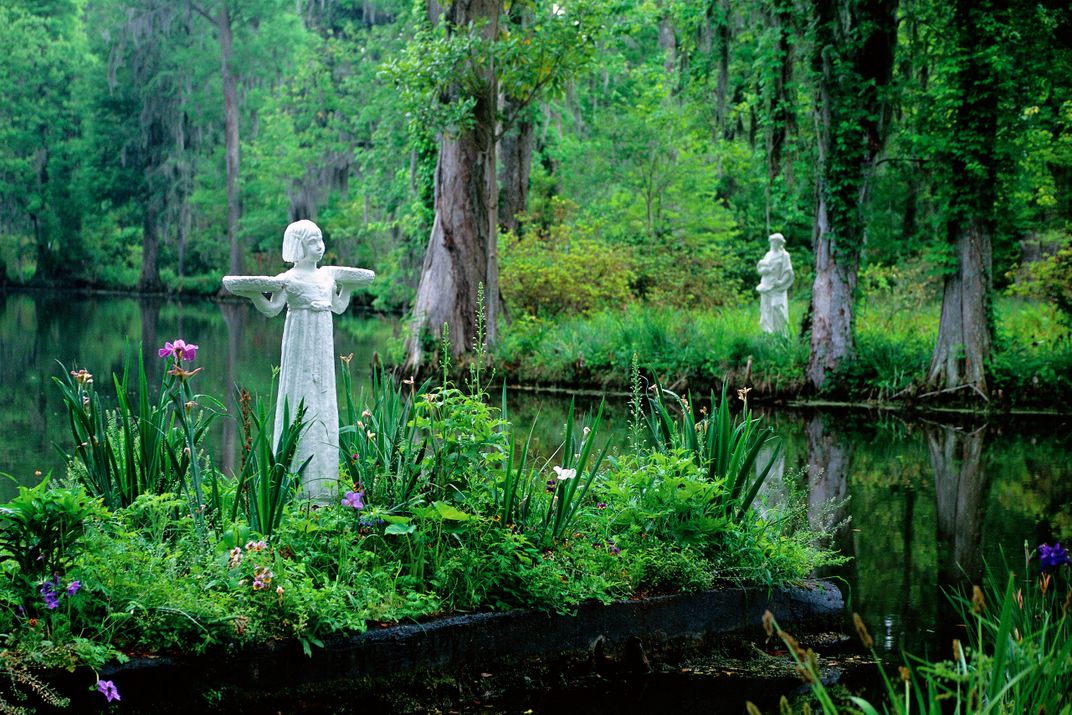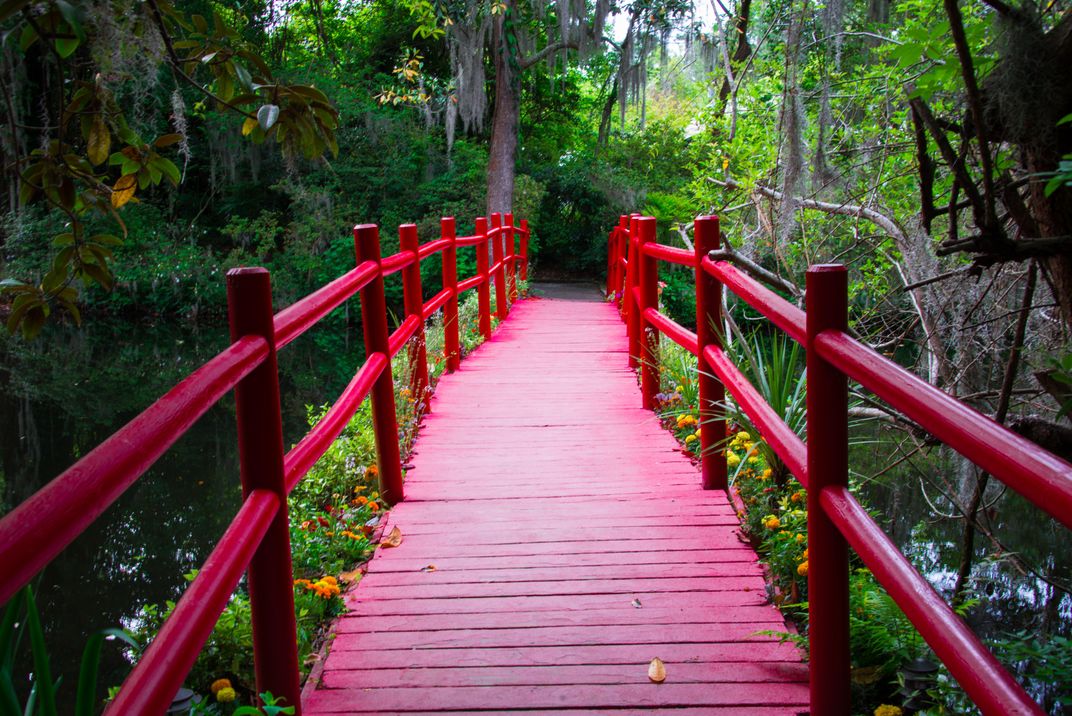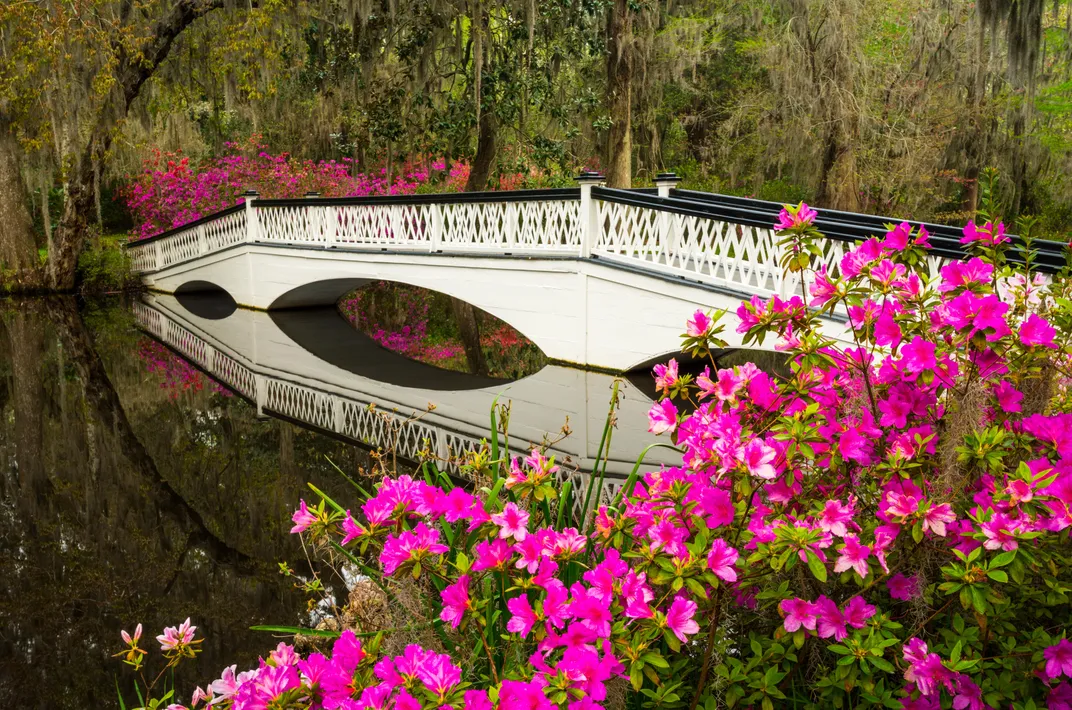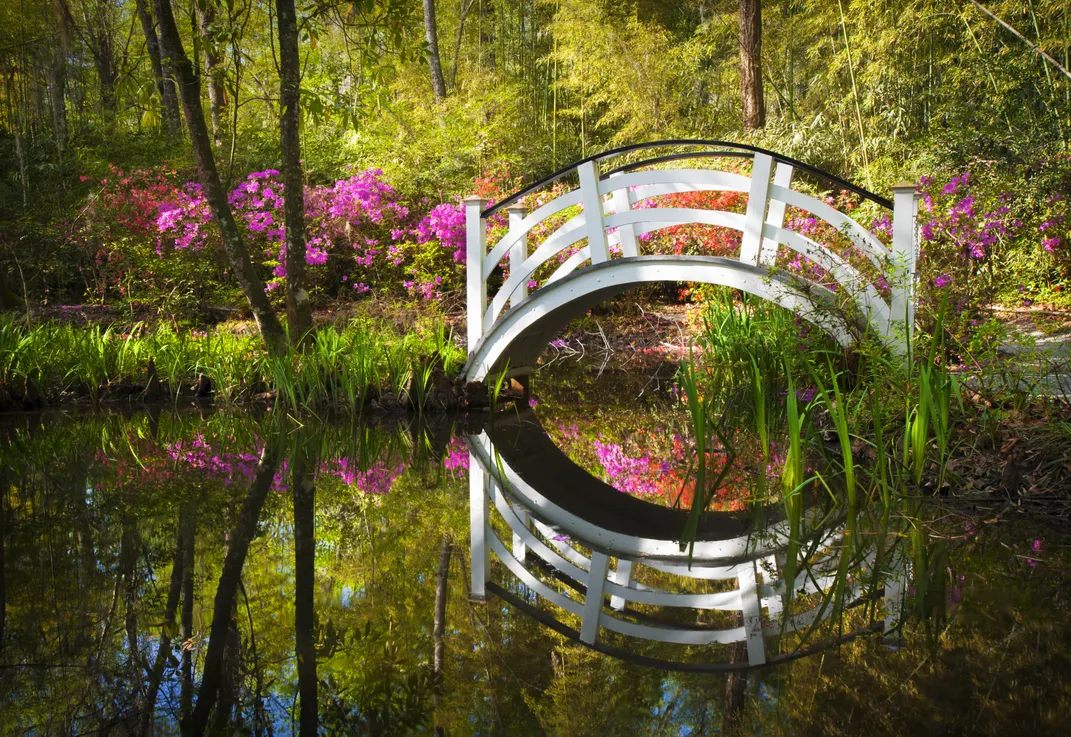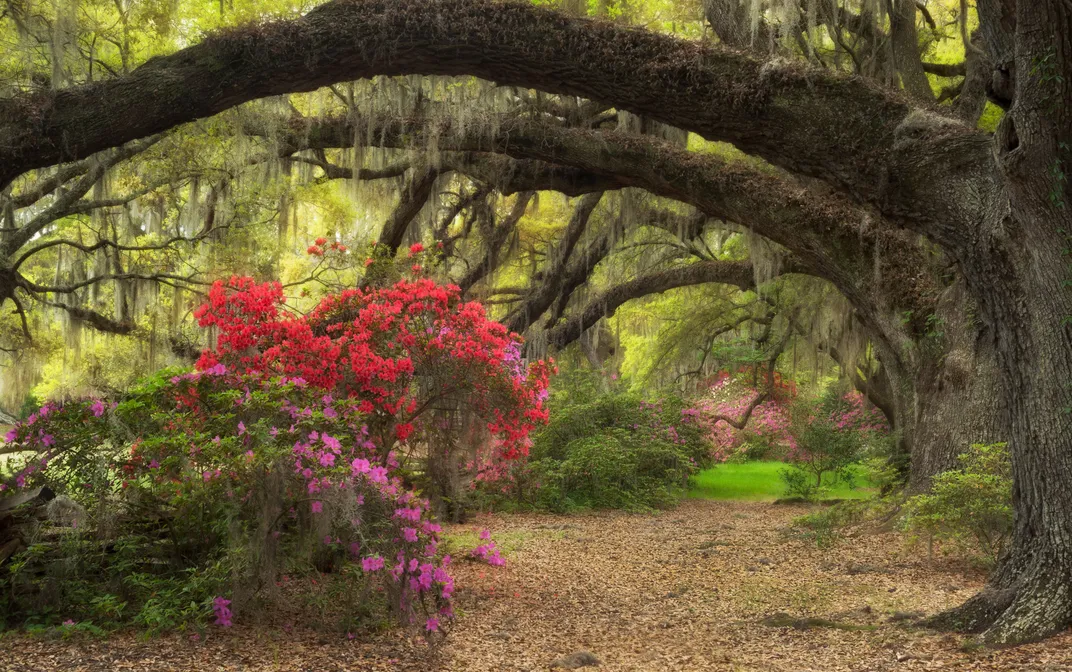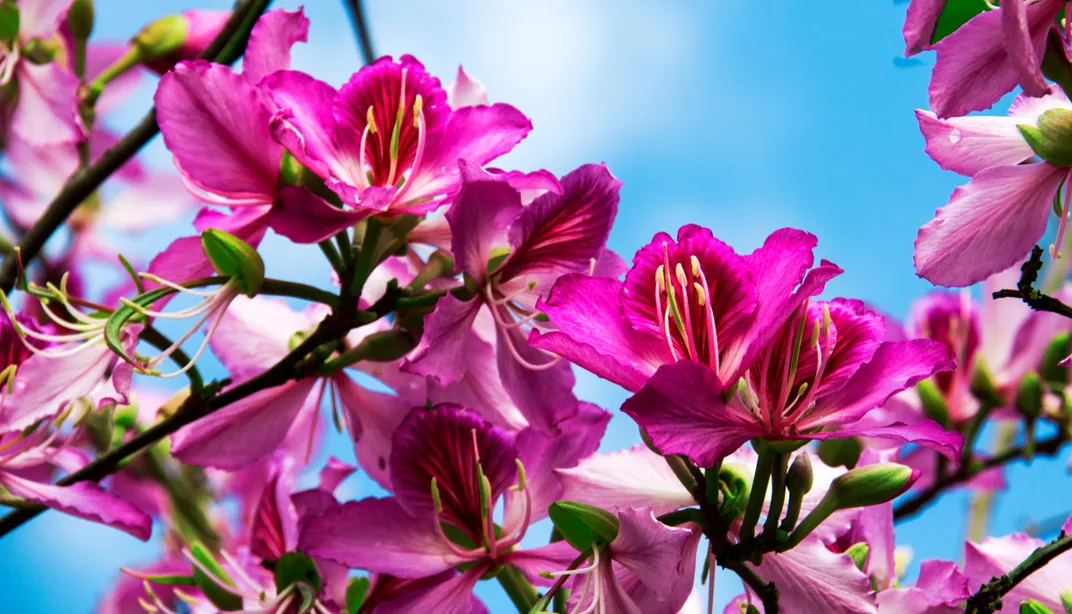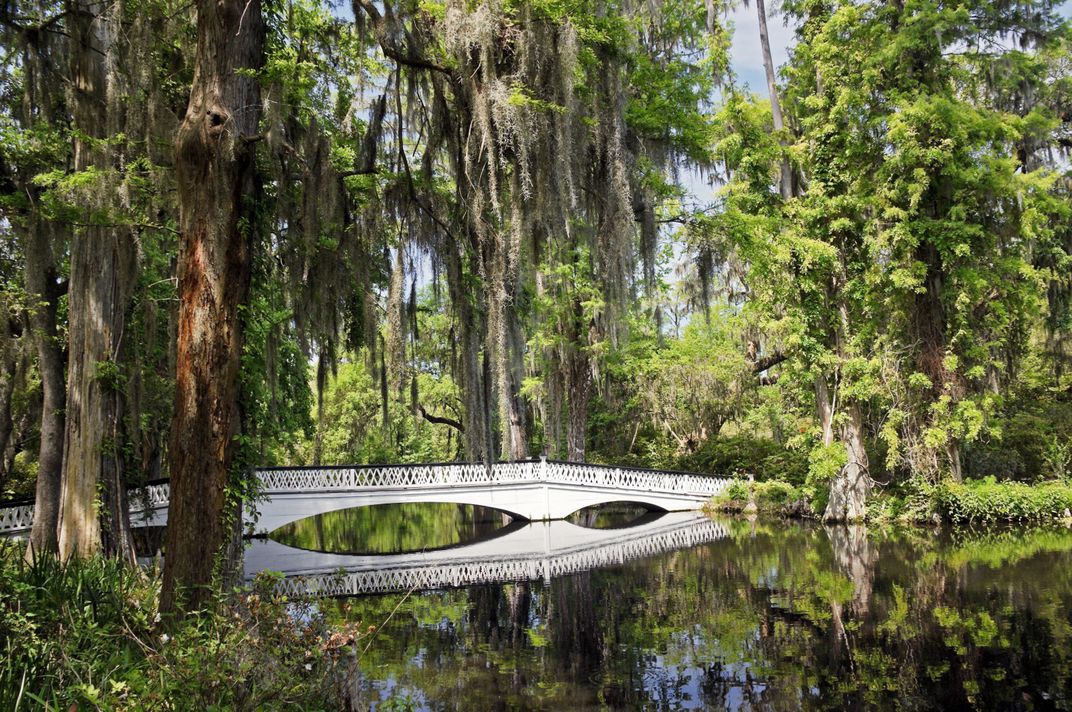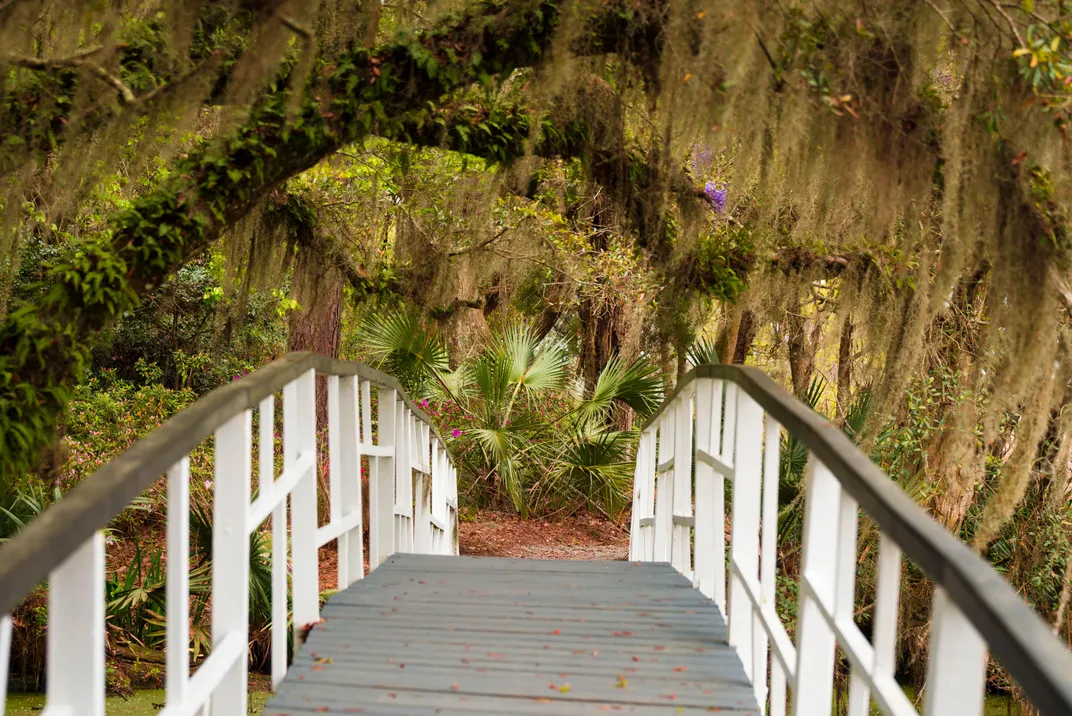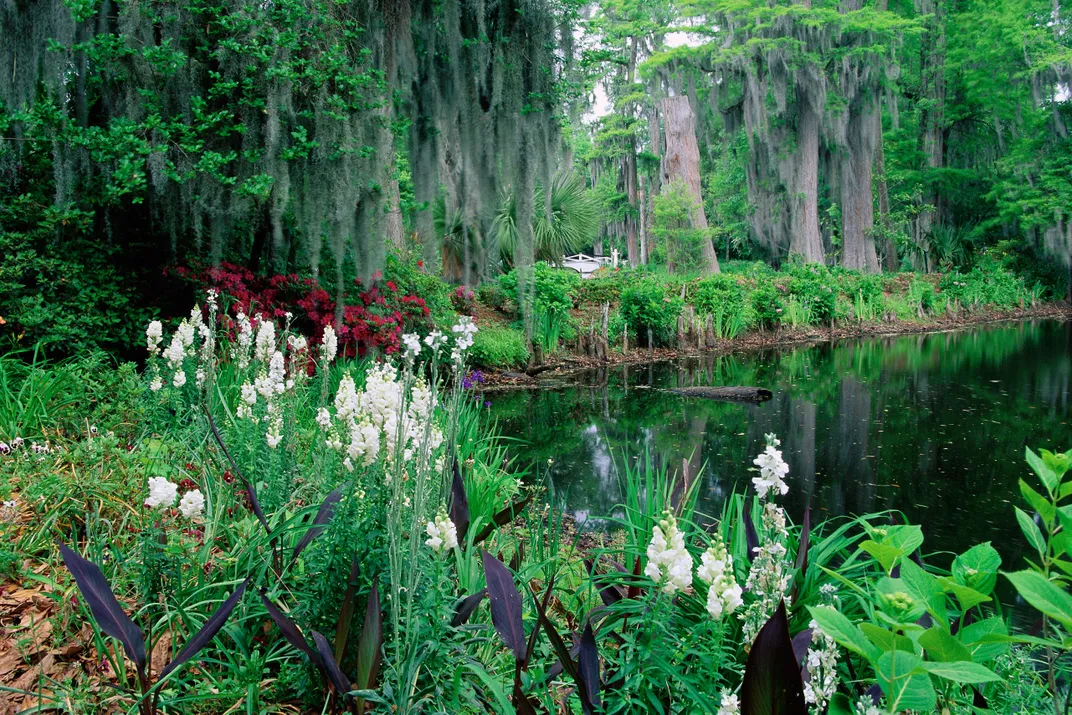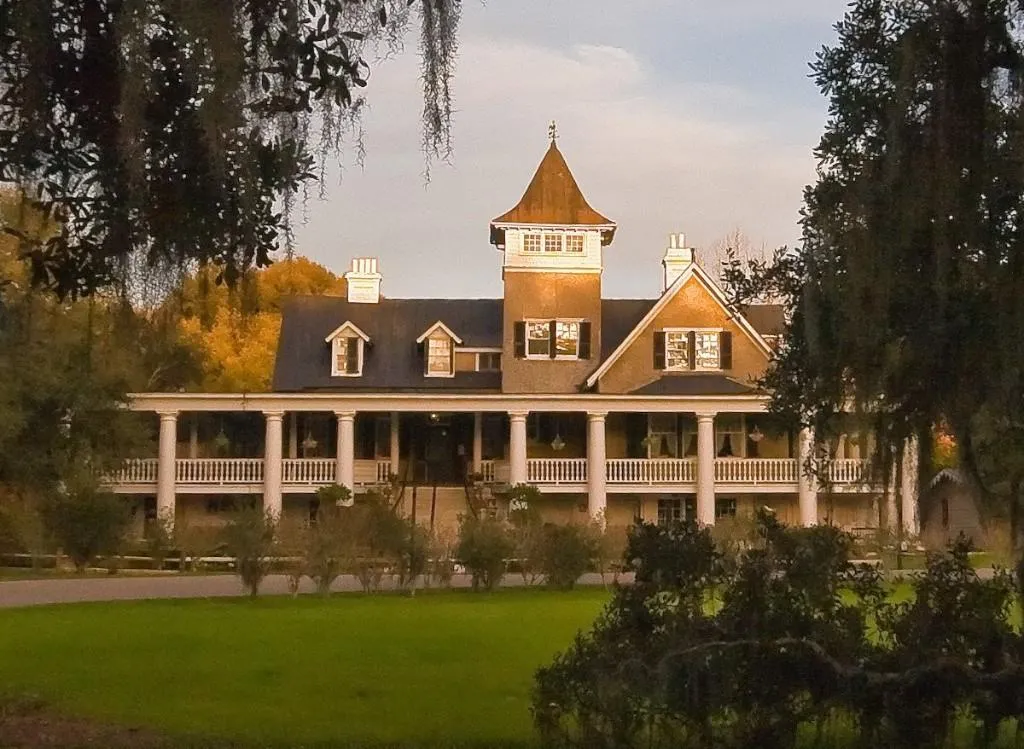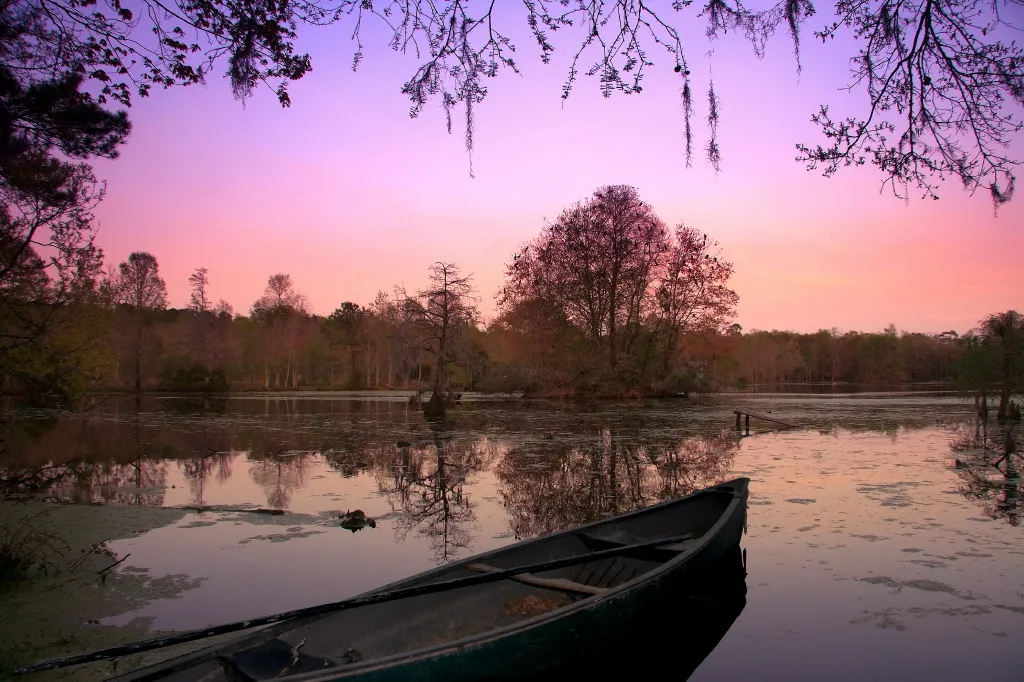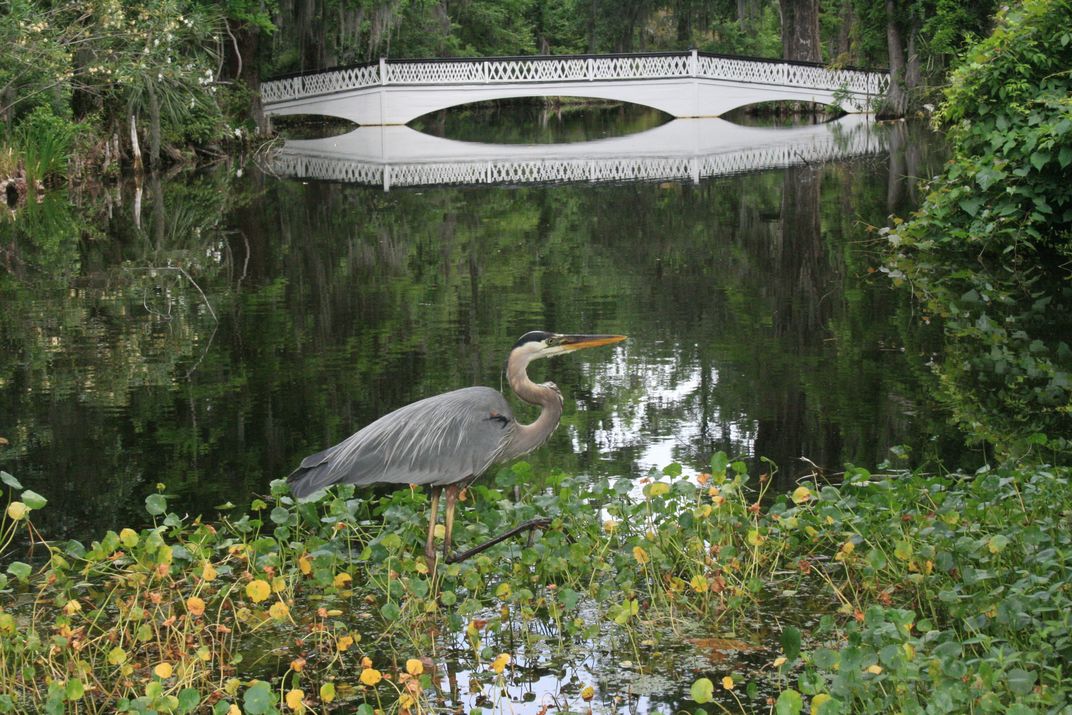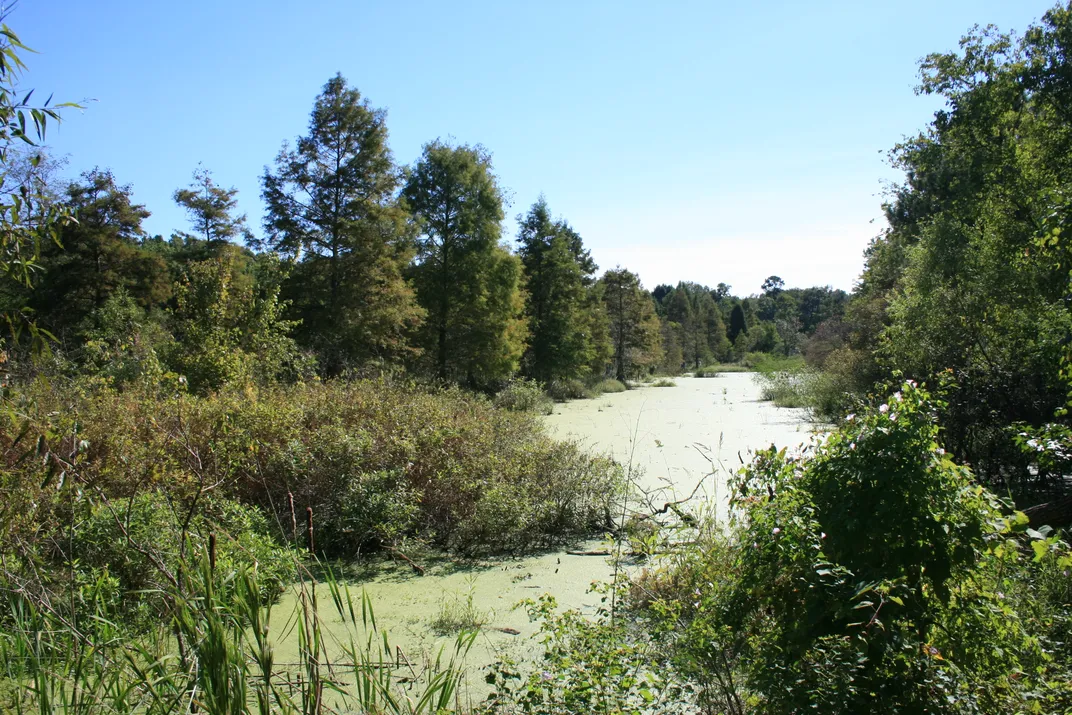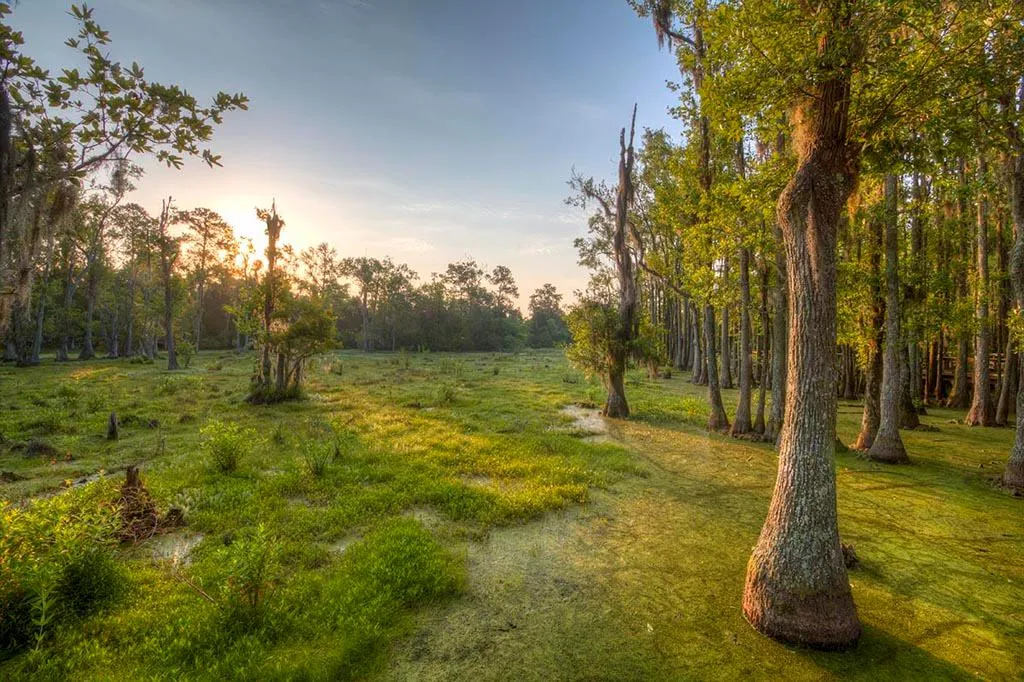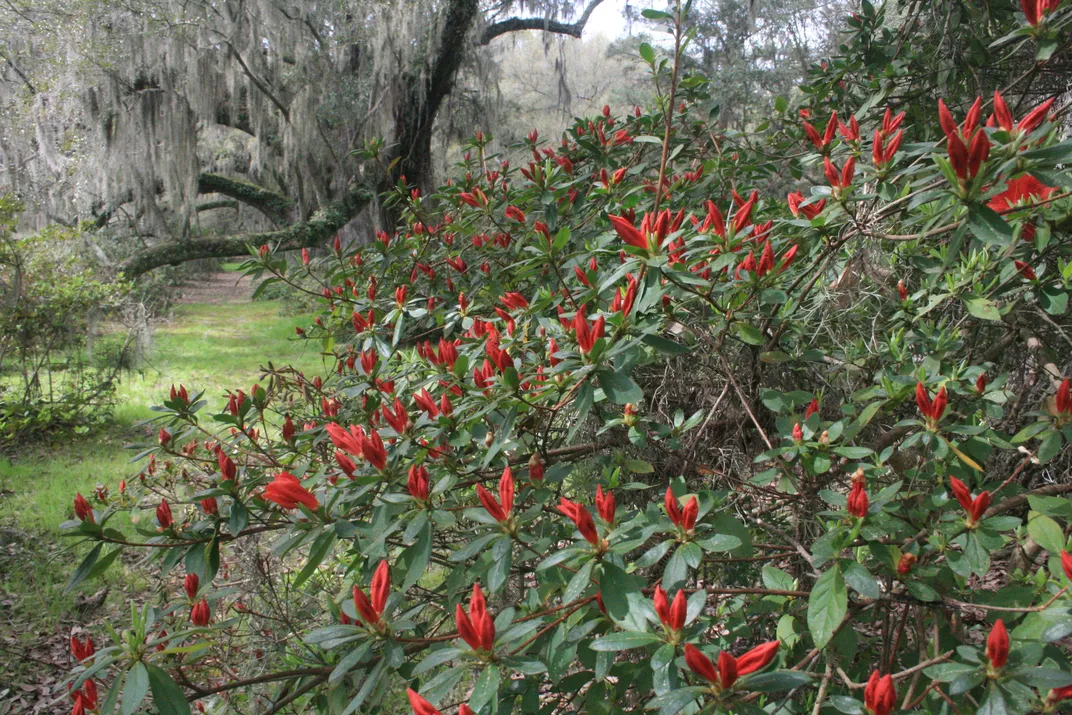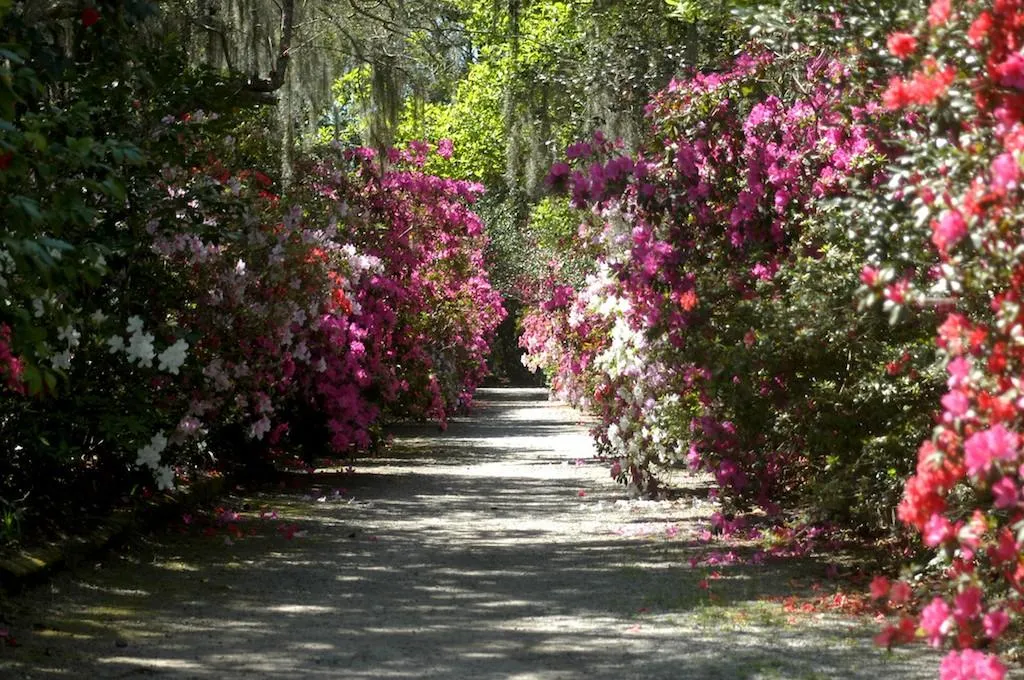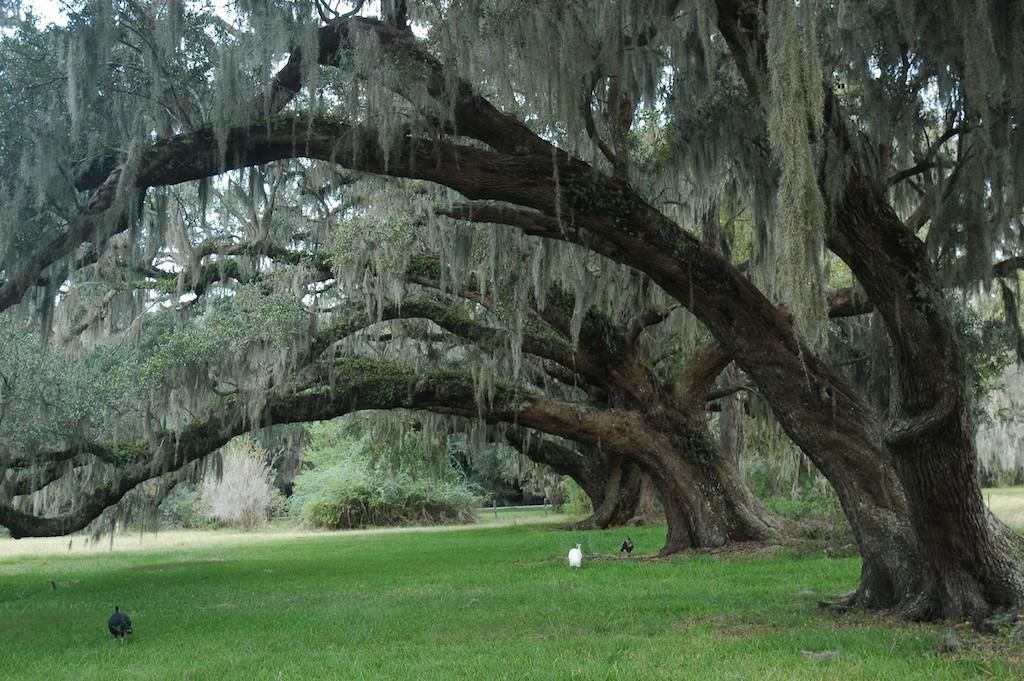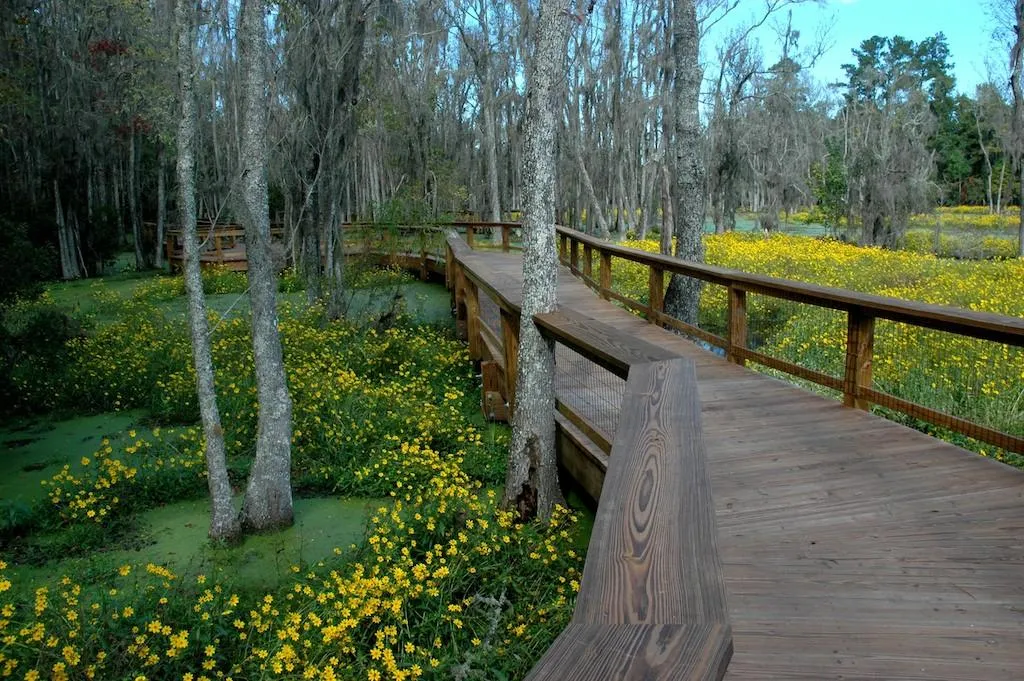The Southern Romance of the Nation’s Oldest Public Garden
Three centuries of beauty and history are on display at the Magnolia Plantation and Gardens
The Spanish moss dips low as the sunlight reflects off still waters. Alligators sun themselves, while blue herons stand among the nearby cypress trees. Below, a turtle’s head bobs in and out of the swamp’s black water. This is the scene at Magnolia Plantation and Gardens outside Charleston, South Carolina—said to be the nation's oldest public gardens, as well as perhaps the last large-scale Romantic style garden left in the country.
“It is man’s attempt at recreating Eden,” says Tom Johnson, the director of the gardens and a renowned horticulturalist. “A place where man, God and nature could be in harmony together.”
Thomas Drayton and his wife, Ann, first established Magnolia Plantation in 1676, after arriving as farmers from Barbados. The plantation’s cash crop was “Carolina Gold”—a type of rice—which brought great wealth to the family during the Colonial Era. By the American Revolution, the Draytons were influential in both state and national politics. William Henry Drayton, Thomas’ grandson, was one of South Carolina’s most vocal proponents for war against the British. He would become the state’s first Chief Justice and a member of the Second Continental Congress. The plantation was passed down through the generations, until the Reverend John Grimké Drayton inherited it in 1836. He turned this working plantation in the South Carolina low country into one of the most beautiful public gardens in America.
The Romantic-style garden had been popularized in Europe during the 18th century, thanks to the efforts of famed landscape architects William Kent and Lancelot “Capability” Brown. Such gardens flourished during the Industrial Revolution taking place in Europe, in part by emphasizing emotion and a lack of control. “A formal garden controls nature and a Romantic garden cooperates with nature…man doesn’t control nature, he simply designs himself to be part of it,” Johnson explains.
According to Johnson, the Romantic-style garden movement never really took off in America. When it was popular in Europe, the United States was still primarily wilderness. “The last thing we wanted to do was to cooperate with nature. We wanted to whip her back, so most American gardens became formal,” Johnson says.
Drayton had seen Romantic-style gardens in England while studying for the ministry and brought them stateside. In the 1840s, he was the first to introduce the now-common azalea to America's outdoor gardens when he planted it at Magnolia Plantation. Drayton was also one of the first to utilize Camellia Japonica as a landscaping plant, naming his particular varietal after his wife, Julia. It was also at this time that he befriended John James Audubon, the famed writer and illustrator of Birds of America. They were such good friends that Audubon painted two of his final works at Magnolia. Later, the estate’s swamp garden would be dedicated to Audubon and bear his name.
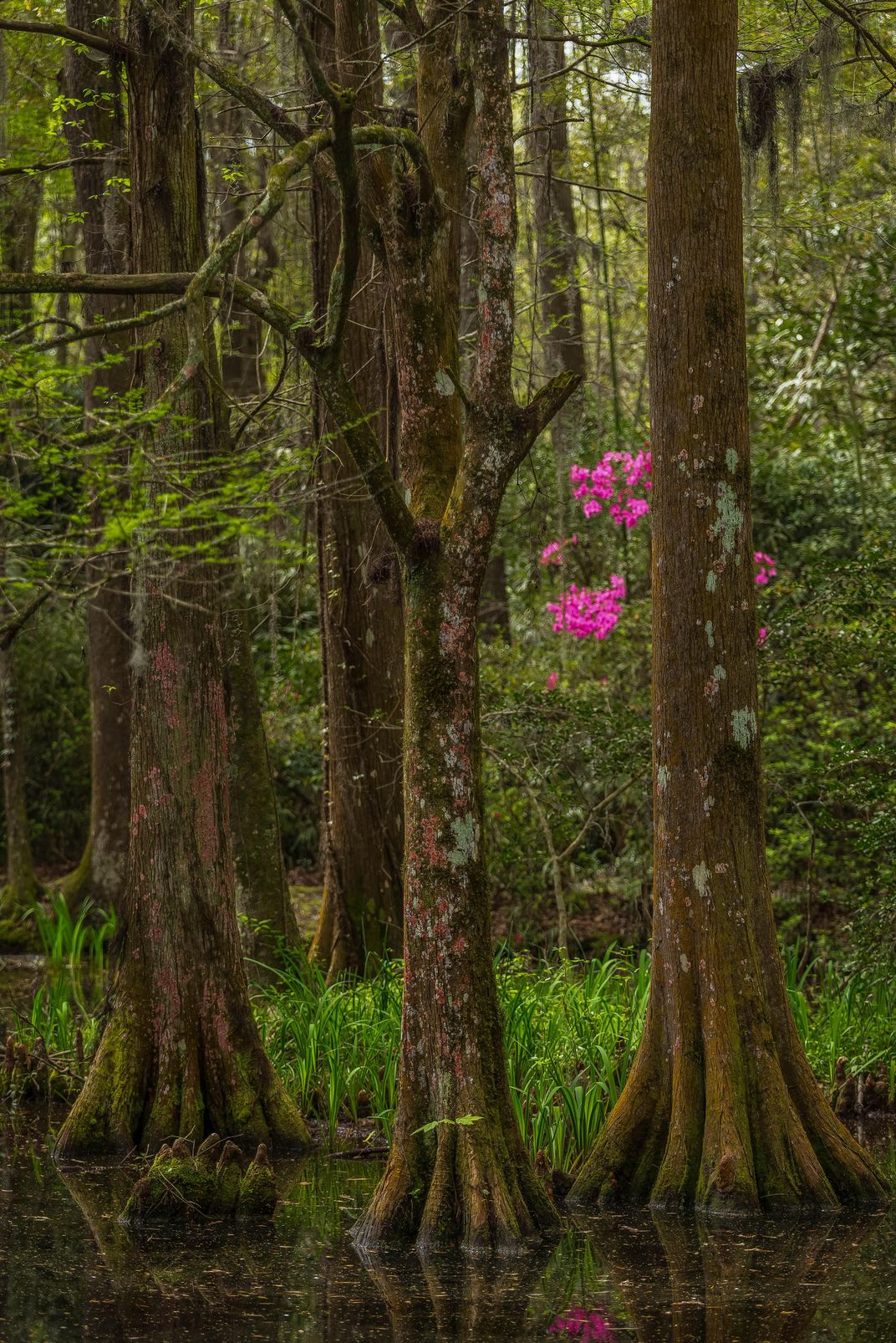
The aftermath of the Civil War left the plantation and the garden in dire straits, like much of the rest of the South. In order to avoid financial ruin, Drayton was forced to sell over half the property. As for the reminder of the estate, he did something that few had ever done before: In 1872, he opened it up to the public. It remains the oldest tourist attraction in the region and claims to be among the oldest public gardens in America.
Magnolia Plantations and Gardens are now owned by the 13th generation of the Drayton family. In previous years, the family updated the gardens with new cuttings and planet varieties, but in 2007, they decided to go back in time. The family hired Johnson, head horticulturalist for the American Camellia Society, who also helped design the gardens at President Carter’s Museum and Library in Atlanta, to bring Magnolia Gardens back to its earlier beauty.
Johnson and his team went on what they called a “world-wide mission” to track down pre-1900 varieties of flowers. Today, Johnson’s main job is researching and making sure the gardens adhere to historical record. “I always ask myself what plants were here, where did they came from and how do we find them again,” Johnson says.
Besides the Romantic splendor of the main gardens, the estate’s Audubon Swamp Gardens feature hundreds of egrets, herons and other waterfowl cavorting among the cypress and tupelo gum trees. It’s a chance to get up close to a setting that defined this part of the country when the site was first established more than three centuries ago, before the nation even existed.
In recent years, Magnolia has also partnered with the "Slave Dwelling Project" to restore and build educational programming around several cabins which once housed enslaved, and later free, African Americans who cared for the gardens. On February 17, 2017, Magnolia will present "Living History Through the Eyes of the Enslaved," the first in a series of living history presentations that complement the garden's year-round "From Freedom to Slavery" tour.
Planning Your Next Trip?
Explore great travel deals
Smithsonian magazine participates in affiliate link advertising programs. If you purchase an item through these links, we receive a commission.
